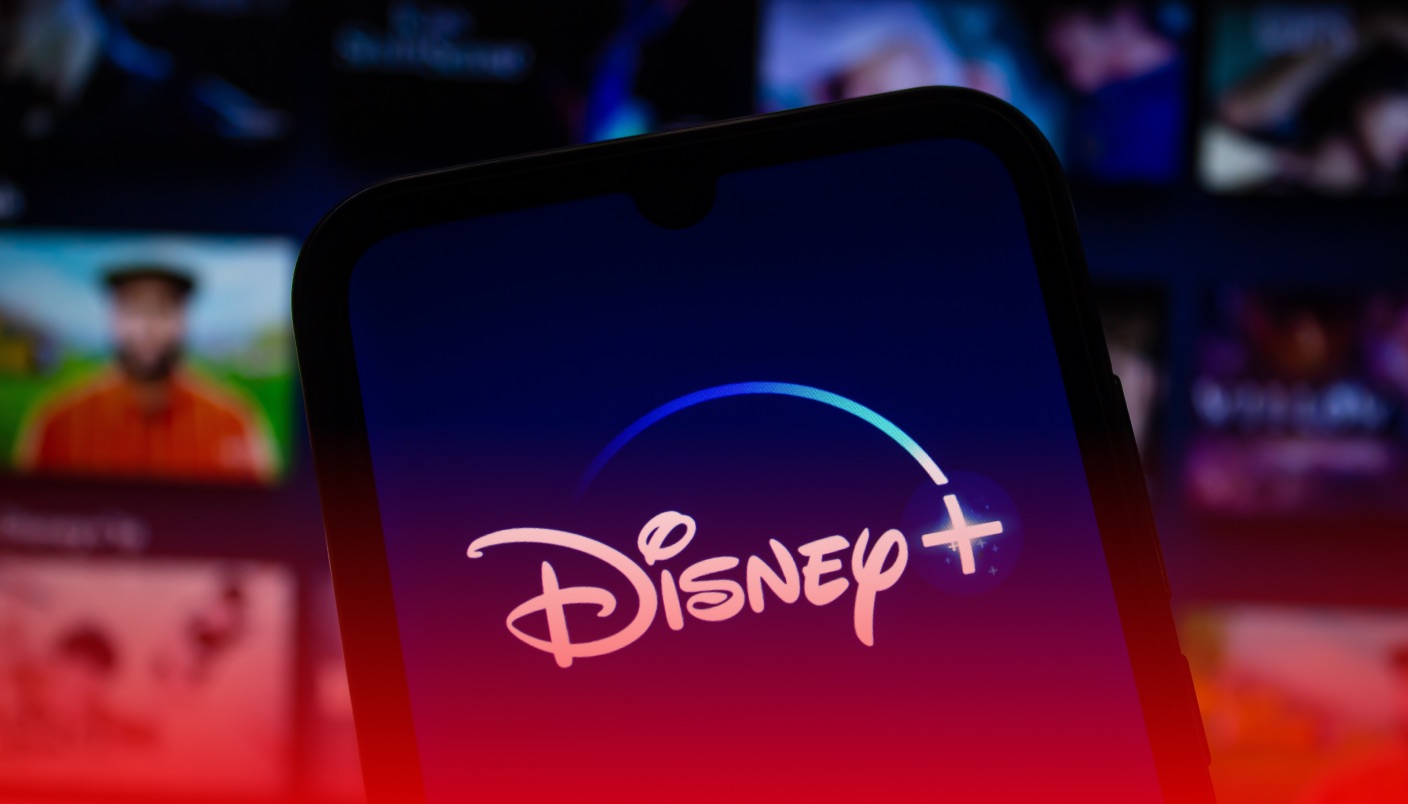Breaking News! 🚨 Top 10 brokers is here! See the most trusted trading platforms of 2024. Go now!
Disney’s Streaming Success: Lessons for the Entertainment Industry
Delve into Disney's streaming success and its impact on the entertainment industry. Gain expert insights and lessons for investors from Disney's streaming strategies.
3 months ago, Aug 13, 10:12 am

Investors are constantly on the lookout for companies that can navigate the challenges of technological disruption while leveraging their established strengths. The Walt Disney Company has emerged as a prime example of such an enterprise, capturing the attention of both seasoned and novice investors alike.
As traditional media continues to lose ground to streaming platforms, Disney’s successful pivot to direct-to-consumer services has positioned it as a frontrunner in the entertainment industry. The company’s unique blend of iconic intellectual property, technological innovation, and diverse revenue streams makes it an attractive option for those looking to capitalize on the future of media consumption.
Breaking Down the Numbers
Disney’s path to streaming profitability has been a closely watched journey in the investment community. In the third quarter of 2024, the company’s streaming division, which includes Disney+, Hulu, and ESPN+, reported an operating income of $47 million. This figure represents a remarkable turnaround from the $512 million loss recorded in the same period just a year earlier.
The revenue figures for the streaming segment are equally impressive, reaching $6.4 billion in the third quarter of 2024. This represents a robust 15% year-over-year increase, demonstrating strong growth momentum even as the streaming market becomes increasingly saturated.
The composition of Disney’s streaming success is also noteworthy. While the overall streaming business achieved profitability, it was primarily driven by the performance of ESPN+. During the same period, Disney+ and Hulu collectively saw an operating loss of $19 million.
It’s important to note that this milestone was reached one fiscal quarter earlier than Disney executives had initially projected. This early success not only boosts investor confidence but also provides Disney with additional resources and flexibility to further invest in content and technology.
Growth and Market Capitalization
Disney’s streaming success has had a significant impact on the company’s overall financial performance. In the fiscal third quarter of 2024, Disney reported total revenue of $23.1 billion, marking a 4% increase from the previous year.
With streaming revenue reaching $6.4 billion, it now accounts for a substantial portion of Disney’s total revenue. This shift in revenue composition reflects the changing nature of media consumption and Disney’s successful adaptation to these trends.
Market Capitalization
As of August 2024, Disney’s market capitalization stood at approximately $157 billion. This figure represents the total value of the company’s outstanding shares and is a key metric used by investors to gauge the overall size and value of a company. Disney’s market cap reflects its position as one of the largest and most influential companies in the entertainment industry.
2023 Performance
To provide context for Disney’s recent achievements, it’s helpful to look back at the company’s performance in 2023. For the fiscal year 2023, Disney reported total revenue of $88.9 billion. The Direct-to-Consumer segment, which encompasses the company’s streaming services, contributed $20.1 billion to this total.
By the end of 2023, Disney’s market capitalization stood at approximately $153 billion. The growth in market cap from 2023 to 2024, albeit modest, reflects the positive impact of the streaming division’s success on investor perceptions of the company’s value and future prospects.
Strategies Behind the Success
Disney’s streaming triumph is rooted in its vast content library and ongoing investment in new, high-quality productions. The company’s strategy focuses on leveraging its iconic brands and franchises to create compelling content that drives both subscriber acquisition and retention, standing out in the crowded streaming market.
Key strategies:
- Leverage iconic franchises for content.
- Appeal to multiple demographics.
- Produce family-friendly and mature content.
- Expand offerings through strategic acquisitions.
Disney’s content strategy caters to a wide range of audiences. For younger viewers, Disney continues to produce family-friendly content under its Disney and Pixar banners, fostering long-term brand loyalty by introducing new generations to its classic characters.
For older audiences, Disney capitalizes on the popularity of its Marvel and Star Wars franchises. The interconnected Marvel Cinematic Universe and the expansion of the Star Wars universe with series like “The Mandalorian” provide continuous value, keeping fans engaged year-round.
Additionally, the acquisition of 21st Century Fox has allowed Disney to diversify its content offerings further, helping the company compete more effectively against other streaming giants like Netflix and Amazon Prime Video.
Bundle Offerings
Another crucial element of Disney’s streaming strategy has been its approach to service bundling. By offering Disney+, Hulu, and ESPN+ as a package deal, the company has created a compelling value proposition for consumers while also reducing churn across its platforms.
This bundling strategy serves multiple purposes. Firstly, it increases the perceived value for consumers, who gain access to a wide range of content – from family-friendly Disney fare to more adult-oriented Hulu content and live sports on ESPN+ – at a discounted price compared to subscribing to each service individually. This perceived value helps in both customer acquisition and retention.
Secondly, the bundle approach allows Disney to cross-promote its services and content. A subscriber who initially signs up for Disney+ might discover content on Hulu that keeps them engaged with the bundle, or a sports fan primarily interested in ESPN+ might explore the broader content offerings on the other platforms.
Lastly, bundling helps Disney compete more effectively with other streaming giants that offer a wider range of content types on a single platform. By bringing together its various streaming services, Disney can offer a comparable breadth of content while maintaining the distinct branding and focus of each individual service.
The success of this bundling strategy is evident in the reduced churn rates and increased average revenue per user (ARPU) reported by Disney. As the streaming market matures and competition intensifies, this approach may prove to be a key differentiator for Disney in maintaining its growth trajectory.
Cost Management
Effective cost management has been crucial to Disney’s streaming profitability, alongside content investment and strategic bundling. Under CEO Bob Iger, Disney implemented significant cost-cutting measures, including a major restructuring that resulted in thousands of job cuts. These actions streamlined operations and reduced overhead, with a focus on optimizing content production and technological infrastructure in the streaming division.
Disney balanced big-budget productions with cost-effective series and movies, ensuring a steady stream of content while managing costs. By leveraging existing intellectual property for spin-offs and related content, the company maximized its return on investments. Additionally, Disney effectively reduced customer acquisition costs by leveraging its strong brand and cross-promoting across platforms, aiding the successful international expansion of Disney+.
Challenges and Future Outlook
The streaming market remains highly competitive, with established players like Netflix and Amazon Prime Video continually innovating and new entrants vying for market share. Disney’s ability to maintain its growth trajectory in this environment will be crucial for its long-term success and attractiveness to investors.
One of the primary challenges Disney faces is content differentiation. While the company boasts an impressive library of intellectual property, other streaming services are investing heavily in original content production. Netflix, for instance, continues to produce a high volume of original series and films, some of which have become cultural phenomena. Amazon Prime Video has made significant investments in properties like “The Lord of the Rings” series, directly competing with Disney in the realm of big-budget, franchise-based content.
Another competitive factor is technological innovation. Streaming platforms are continually evolving their user interfaces, recommendation algorithms, and streaming quality to enhance the viewer experience. Disney will need to ensure that its technical capabilities keep pace with or exceed those of its competitors to maintain subscriber satisfaction and loyalty.
Pricing strategy is also a key battleground in the streaming wars. As consumers become increasingly price-sensitive and wary of subscribing to multiple services, Disney’s pricing and bundling strategies will need to evolve. The company’s recent partnership with Warner Bros. Discovery to offer a bundled package including Disney+, Hulu, and Max is an example of how streaming services are adapting to these market pressures.
Furthermore, the entrance of traditional media companies into the streaming space has intensified competition. Services like Paramount+ and Peacock are leveraging their own content libraries and production capabilities to carve out market share, potentially fragmenting the audience and making subscriber acquisition and retention more challenging for all players.
Global Expansion
International markets present a significant growth opportunity for Disney’s streaming services, but they also bring unique challenges. As domestic markets near saturation, successful global expansion will be key to sustaining long-term growth.
A primary challenge is content localization. While franchises like Marvel and Star Wars have global appeal, success often requires investing in region-specific content. This includes not just translation, but also producing or acquiring content that resonates locally. Disney has already begun creating original content in markets like India and Latin America, but ongoing investment will be needed to compete with local streaming services.
Regulatory challenges are also crucial, as countries vary in laws around content censorship, data privacy, and foreign media ownership. Navigating these requires careful strategy and partnerships with local entities.
To penetrate different markets, Disney may need to adjust pricing or form partnerships with local telecom companies. Adapting strategies to diverse global markets will be essential for achieving sustained international growth, particularly in high-potential regions like Asia and Latin America.
Lessons for Investors
- Disney’s transition to streaming success underscores the importance of patience when investing in evolving technologies and business models.
- The company had to make significant investments and strategic shifts to move from a traditional media powerhouse to a streaming leader.
- Initially, many investors were doubtful of Disney’s ability to compete with established streaming giants like Netflix.
- The early years of Disney+ were marked by significant losses, leading to stock price volatility as the market weighed short-term costs against long-term potential.
- Investors who believed in Disney’s vision and held their shares during the transition have now seen the company achieve streaming profitability.
Get SCTA's daily newsletter in your inbox every weekday.
You may unsubscribe at any time.
